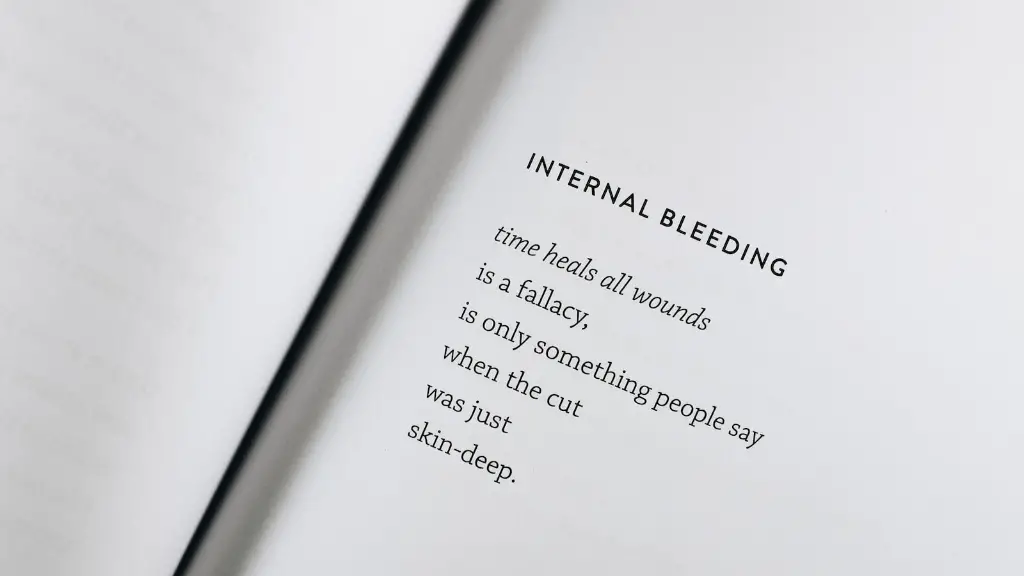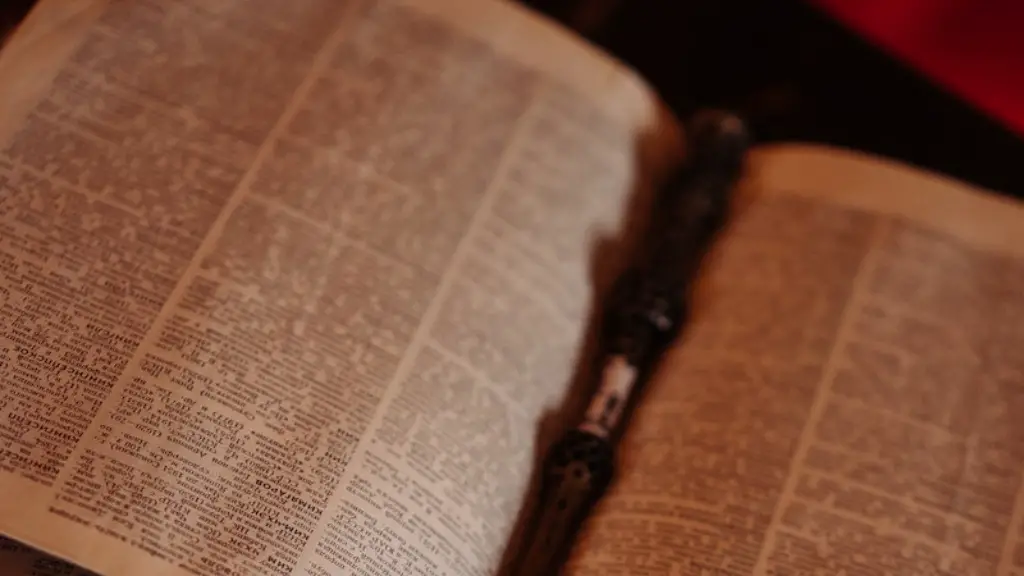Mood in Poetry
Mood plays a crucial role in poetry, but what does it actually mean? In literature, mood is a quality that invokes particular emotions within the reader. It transcends the literal elements of the poem, going beyond the words on the page to create a feeling that engages the reader.
To truly appreciate what mood means in poetry, there is no better resource than understanding the poet themselves. Poets are usually inspired by the various feelings associated with their writing. By expressing their feelings, they create powerful, striking images that elicit moods in both themselves and the reader.
Moods in poetry can reflect all sorts of emotions, from happiness to profound sadness. It can be subtle, evocative, and vibrant, bringing the poem to life. For example, a poem about a funeral may evoke a sense of sorrow and grief. The poet’s use of language and imagery plays a key role in eliciting this mood. Alternatively, a poem about a proud moment may evoke a sense of joy and elation.
To truly understand what mood means to a poet, one must consider the poet’s attitude. Mood is expressed through the poet’s voice, the subjective perspective they take when conveying emotion. Poets often use descriptive and figurative expressions to create vivid imagery that creates a unique mood. For instance, a poem describing a walk through a forest may evoke a sense of serenity and awe.
Mood in poetry also plays a vital role in conveying the poet’s message. It affects the way readers interpret the poem and can drastically alter the impact and meaning of the poem. Therefore, it’s important to keep the tone and mood of the poem in mind when reading and interpreting it.
Mood is also an essential factor when studying poetry. It can provide insight into the writer’s views, opinions and ideas. Furthermore, reading a poem out loud can help to convey the mood more effectively. This can help to bring the poem and its mood to life, allowing the reader to truly appreciate the poet’s message.
The Effects of Mood in Poetry
The mood of a poem has a lasting effect on the reader. By conveying emotion and sentiment, it can evoke feelings in the reader. This may be interpreted as a positive or negative experience. For instance, a poem about a sad event can evoke a sense of sorrow, whilst a poem about a joyous occasion can evoke happiness or elation.
Mood is also an important tool in understanding the literary devices and techniques used by the poet throughout the poem. By understanding mood and the way it shapes a poem, one can gain greater insight into the theme, ideas, and overall message of the poem. Furthermore, understanding the mood of a poem can help to better evaluate and critique the poem itself.
Mood in a poem is also essential in providing context and setting the tone. It enhances a poem’s atmosphere, creating a unique and meaningful experience. Through this, the reader can create a connection between themselves and the poem, gaining a better understanding of the poem’s message.
Mood is a complex concept, but it’s important to remember that it comes from the poet’s feelings, beliefs, and outlook on life. It’s a reflection of the poet’s innermost thoughts and feelings, and the power of its words has the potential to resonate with the reader.
Types of Mood in Poetry
Moods in poetry can range from sorrow to joy. They can also be simply melancholic, dreamy, angry, or hopeful. Each mood will be conveyed differently in the poem, making it necessary to understand the nuances of each poem. Common types of mood in poetry include:
- Happy
- Sad
- Inspirational
- Fearful
- Mysterious
- Calm
Furthermore, different types of mood can be blended together to create a masterful poem with multiple themes. By understanding how these different moods are blended it can be easier to interpret the poet’s intent.
Tools for Identifying Mood in Poetry
When reading a poem, it’s essential to be able to identify the mood. To do this, one must be able to recognize certain devices and techniques that a poet may use to convey mood. These tools can range from imagery, symbolism, and figures of speech, to similes, allusions, and tone.
Understanding the poet’s use of devices, language, and imagery can help to uncover the emotions and feelings being conveyed. Furthermore, understanding general literary devices, such as irony and metaphor, can also aid in deciphering the mood of the poem.
To truly appreciate what a poet is trying to communicate, it’s important to analyze the poem closely. Reading it multiple times, carefully considering the words and phrasing, can help to uncover the hidden meaning and the feelings associated with it.
Tips for Creating Mood in Poetry
If you’re writing poetry, it’s important to know how to create an effective mood that resonates with the reader. Here are a few tips to help achieve this:
- Start by identifying the primary emotion you’re trying to convey and use imagery and language to communicate this.
- Use active verbs, metaphors, and other figurative language to evoke particular feelings and emotions.
- Focus on the tone of the poem, as it can have a strong effect on the reader.
- Be sure to pay attention to the structure of your poem, as the way lines and stanzas are arranged also has an effect on the reader.
- Read your poem aloud to test the mood you’ve created and to see if it conveys the message you want it to.
Analyzing Mood in Poetry
Analyzing mood in poetry requires close reading and an understanding of the various literary devices used to create an emotional impact. It’s important to consider the poet’s intent and how the poem is structured and phrased. Only then can one truly appreciate what mood means in poetry.
It’s essential to understand the nuances of the poem and how they can affect the reader’s interpretation. Figurative language, rhythm, tone, and imagery can all play a role in conveying mood and creating vivid imagery that provides a unique experience for the reader.
Ultimately, understanding mood in poetry can be a highly rewarding experience and can provide great insights into the poem and the poet themselves. It’s a unique and powerful tool that can bring a poem to life, creating a lasting impression and inspiring the reader.





